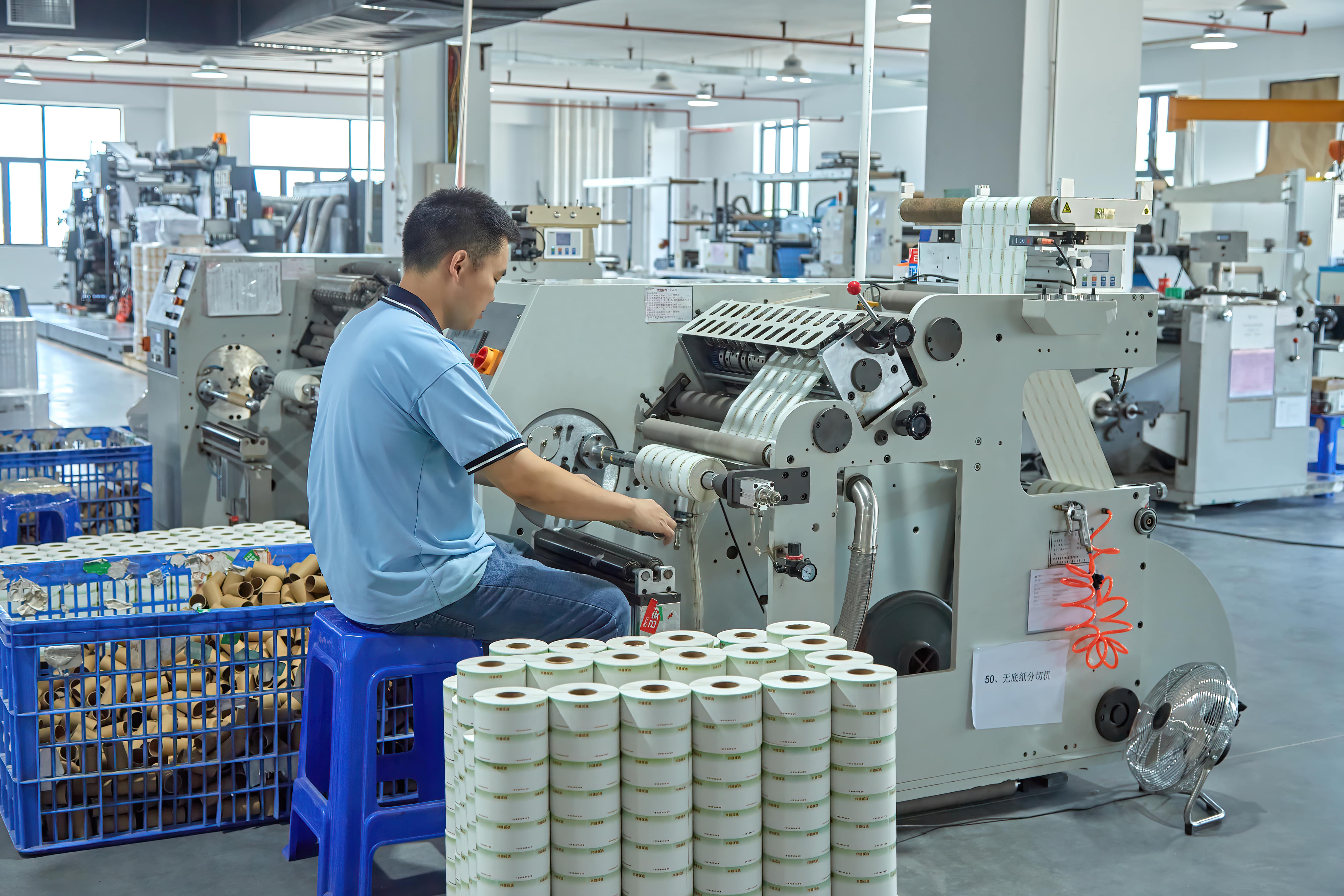RTL
Klik om in te schakelen

Elke democratische verkiezing is afhankelijk van het nauwkeurig uiten en vastleggen van stemmerskeuzes. Stembiljetpapier , hoewel vaak onderschat, is een fundamenteel onderdeel in dit proces. De kwaliteit ervan heeft niet alleen invloed op de fysieke afhandeling van stemmen, maar ook op het vertrouwen van het publiek in de integriteit van verkiezingen. Waarom is de kwaliteit van kiespapier zo belangrijk? Hoe beïnvloedt het verkiezingsresultaten en democratische legitimiteit? Deze vragen vormen de basis voor een uitgebreide verkenning van de rol van kiespapier in moderne verkiezingen, waarbij de noodzaak van superieure materialen, beveiligingsfuncties en productieprocessen wordt benadrukt.
Stembiljetpapier moet verschillende belastingen kunnen weerstaan, variërend van transport over uiteenlopende terreinen tot fysieke behandeling door kiezers en verkiezingspersoneel. Wat gebeurt er als het stemformulier scheurt of de inkt vervaagt? Dergelijke fysieke verslechtering kan stemmen ongeldig maken of verwarring veroorzaken tijdens het tellen. Kwalitatief hoogwaardig stemmelpapier weerstaat deze uitdagingen door sterkte, buigzaamheid en een geschikte textuur te bieden. De keuze van papiergewicht, vezelsamenstelling en afwerking beïnvloedt hoe goed het stemformulier zich gedraagt onder operationele omstandigheden.
Bovendien vinden verkiezingen vaak plaats binnen strakke tijdschema's, waarbij stemformulieren voor en na het stemmen gedurende verschillende perioden worden opgeslagen. Stemformulierpapier dat snel degradeert onder invloed van hitte, vocht of vouwen kan het hele proces in gevaar brengen. Deze duurzaamheid gaat verder dan verkiezingsdag zelf en geldt ook voor eventuele heruit tellingen of audits, waarbij de stemformulieren intact en leesbaar moeten blijven.
Duidelijke weergave van kandidaten, partijlogos en steminstructies op het stemformulier is essentieel. Slechte printkwaliteit op ongeschikt papier kan leiden tot verkeerde interpretaties of dwingen kiezers om per ongeluk hun stembrief ongeldig te maken. Hoe kan de duidelijkheid van afdrukken worden gegarandeerd over miljoenen stemformulieren? Het antwoord ligt in het kiezen van kwaliteitsvol stemmingspapier dat inkt uniform opneemt en ondersteuning biedt voor drukken in hoge resolutie. Dergelijk papier voorkomt doordringen van inkt en behoudt constante contrast, wat cruciaal is voor zowel leesbaarheid voor mensen als optische scannen tijdens elektronische stemtelling.
De rol van stemmingspapier als beveiligde stemmedia vereist sterke maatregelen tegen vervalsing. Microprinten is een dergelijke technologie die kleine tekst of patronen bevat die onzichtbaar zijn voor het blote oog, maar herkenbaar onder vergroting. Deze functies zijn uiterst moeilijk na te maken en voorkomen productie van vervalste stemformulieren.
UV-reactieve inkt en holografische elementen voegen een extra beveiligingslaag toe. Deze inkt blijft onzichtbaar onder normaal licht, maar gloeit op onder UV-licht, waardoor stemmenbeambten eenvoudig de echtheid kunnen verifiëren. Hologrammen die in het stemformulier zijn verwerkt, bieden ook unieke visuele effecten die moeilijk na te bootsen zijn en zo de beveiliging verhogen.
Welke andere innovaties ondersteunen de beveiliging van stemformulieren? Sommige leveranciers integreren serienummers of QR-codes, waardoor elk stemformulier uniek kan worden gevolgd zonder de anonimiteit van de kiezer in gevaar te brengen. Deze traceerbaarheid voorkomt stemfraude of duplicatie en draagt bij aan de algehele transparantie van de verkiezingen.
Naast het voorkomen van vervalsing moet de kwaliteit van stembriefjes ook risico's van manipulatie tegengaan. Temperatuurgevoelige inkt die van kleur verandert wanneer deze wordt blootgesteld aan bepaalde temperaturen, onthult pogingen om stembriefjes na uitgifte te wijzigen. Micro-perforaties maken manipulatie van stembriefjes zichtbaar doordat scheuren of gaten onregelmatig worden. Deze kenmerken die wijzigingen zichtbaar maken, zijn ontworpen om snel aandacht te vestigen op onregelmatigheden, zodat verkiezingspersoneel gestoorde stembriefjes kan identificeren voordat ze worden geteld.

Hoe beïnvloedt de kwaliteit van stembriefjes het vertrouwen van stemmers? Wanneer stemmers een stembriefje ontvangen dat er officieel, stevig en professioneel vervaardigd uitziet, geeft dat hen vertrouwen in de legitimiteit van het proces. Slecht geprinte of flinterdunne stembriefjes kunnen twijfel zaaien over de integriteit van verkiezingen, ongeacht de daadwerkelijke eerlijkheid van het stemproces.
Kiesautoriteiten die prioriteit geven aan kwaliteitsvol kiespapier, zenden een duidelijke boodschap uit dat elke stem telt en dat de verkiezing zorgvuldig zal worden uitgevoerd. Deze perceptie is cruciaal om spanningen en protesten rond verkiezingen te verminderen, vooral in politiek instabiele omgevingen.
Kiesambtenaren streven er voortdurend naar om ongeldige stemmen en geschillen over het tellen te minimaliseren. Kwaliteitsvol kiespapier draagt hier direct aan bij door een betrouwbaar medium te bieden waarop kiezers duidelijk hun keuze kunnen aangeven. Uniforme papierstructuur en -gewicht verminderen verstoppingen in scanners en mechanische telapparatuur, waardoor het risico op technische fouten afneemt.
Wanneer stemmen gemakkelijk te verwerken en te scannen zijn, wordt het gehele stementelproces efficiënter en nauwkeuriger. Dit versnelt niet alleen de publicatie van de uitslag, maar vermindert ook de kans op juridische geschillen die kunnen voortvloeien uit betwiste stemmen.
In de afgelopen jaren was er een groeiende vraag naar milieuvriendelijke verkiezingsmaterialen, inclusief stembiljetten. Maar hoe kunnen duurzame keuzes worden gecombineerd met de noodzaak van duurzaamheid en beveiliging?
Moderne productieprocessen maken het mogelijk om stembiljetten te produceren uit gerecycled papier of duurzaam geoogst houtpulp zonder dat dit ten koste gaat van de sterkte of drukkwaliteit. Certificeringen zoals FSC (Forest Stewardship Council) garanderen dat de papierproductie voldoet aan strikte milieunormen.
Het gebruik van duurzame stembiljetten vermindert de ecologische voetafdruk van verkiezingen en brengt democratische praktijken in lijn met wereldwijde inspanningen om klimaatverandering tegen te gaan. Deze aanpak spreekt ook milieubewuste stemmers aan en versterkt het publieke vertrouwen in het kiesproces.
Kiescommissies moeten ervoor zorgen dat het stemmingspapier voldoet aan nationale en internationale normen wat betreft afmetingen, dikte, ondoorzichtigheid en beveiligingskenmerken. Wat gebeurt er als stemmingspapier niet voldoet aan deze regelgeving? Niet-conforme stemmingspapieren kunnen worden afgewezen, wat vertragingen veroorzaakt of kostbare heruitgaven vereist.
Het werken met gecertificeerde leveranciers die deze regelgeving begrijpen, is cruciaal. Fabrikanten van kwaliteitsvol stemmingspapier werken nauw samen met kiesinstanties om papier te produceren dat voldoet aan strenge voorafgaande verkiezingstests en aan alle wettelijke eisen.
De productie van kwaliteitsvol stemmingspapier is slechts de eerste stap. Drukkerijen moeten werken onder strikte beveiligingsprotocollen, met gecontroleerde toegang tot drukkerijruimten en het gebruik van surveillance om alle activiteiten te monitoren. Stemmen worden per lot gedrukt, elk voorzien van unieke identificatoren om substitutie of diefstal te voorkomen.
De distributie van stemmateriaal vanaf drukkerijen naar stemlokalen gebeurt met behulp van verzegelde containers, GPS-tracking en gedocumenteerde custodieprocedures. Deze maatregelen zorgen ervoor dat het stemmateriaal tijdens het transport intact blijft en niet wordt aangeraakt, waardoor de beveiliging die tijdens de productie is gegarandeerd, behouden blijft.
Stemmaterialen moeten worden opgeslagen in klimaatgeregelde opslagruimten om ze te beschermen tegen milieuschade. Beveiligingspersoneel, toegangscontrole en videosurveillance bewaken deze opslaglocaties om ongeautoriseerde toegang of sabotage te voorkomen.
Periodieke audits vergelijken de voorraad stemmaterialen met productie- en distributieregistraties, waardoor verkiezingsautoriteiten vroegtijdig afwijkingen kunnen detecteren. De kwaliteit van het stemmateriaal vergemakkelijkt ook het hanteren tijdens opslag, aangezien duurzaam papier herhaalde inspecties zonder kwaliteitsverlies kan doorstaan.
Nieuwe technologieën beloven de kwaliteit van stemmappen nog verder te verbeteren. Nanotechnologie-infusievezels kunnen de duurzaamheid en beveiliging van papier verbeteren. Slimme inkt die reageert op omgevingsfactoren kan extra beveiligingslagen toevoegen tegen manipulatie.
Doorlopende innovatie zorgt ervoor dat stemmappen zich blijven aanpassen aan de veranderende beveiligingsuitdagingen bij verkiezingen, en zo de democratie beschermen in een tijd van toenemende cyber- en fysieke bedreigingen.
Hoewel elektronisch stemmen in opkomst is, behouden veel democratieën papieren stemmappen als tastbare verificatiebron. Hoge kwaliteit stemmappen ondersteunen digitale systemen door een betrouwbare audit trail te bieden. Deze hybride aanpak combineert de snelheid en het gemak van digitale methoden met de beveiliging en transparantie van fysieke stemmappen.
Het balanceren van de traditionele toepassing van stemmappen met technologische vooruitgang is essentieel om de integriteit van verkiezingen in de toekomst te waarborgen.
Hoogwaardig stemmingspapier maakt scherpere markeringen mogelijk en vermindert verstoppingen in de scanner, waardoor de nauwkeurigheid en snelheid van elektronische of handmatige stemtelling verbetert.
Ja, veel landen volgen normen voor papiergewicht, ondoorzichtigheid en beveiligingsfuncties, vaak geleid door internationale organisaties en kiescommissies.
Ja, defecten zoals vegen of scheuren kunnen leiden tot verwarring bij kiezers en juridische uitdagingen, waardoor het vertrouwen in de verkiezingsresultaten ondermijnd wordt.
Stemmingspapier gebruikt watermerken, speciale inkt, microprint en anti-manipulatiekenmerken zoals temperatuurgevoelige inkt en micro-perforaties om manipulatie te voorkomen en te detecteren.